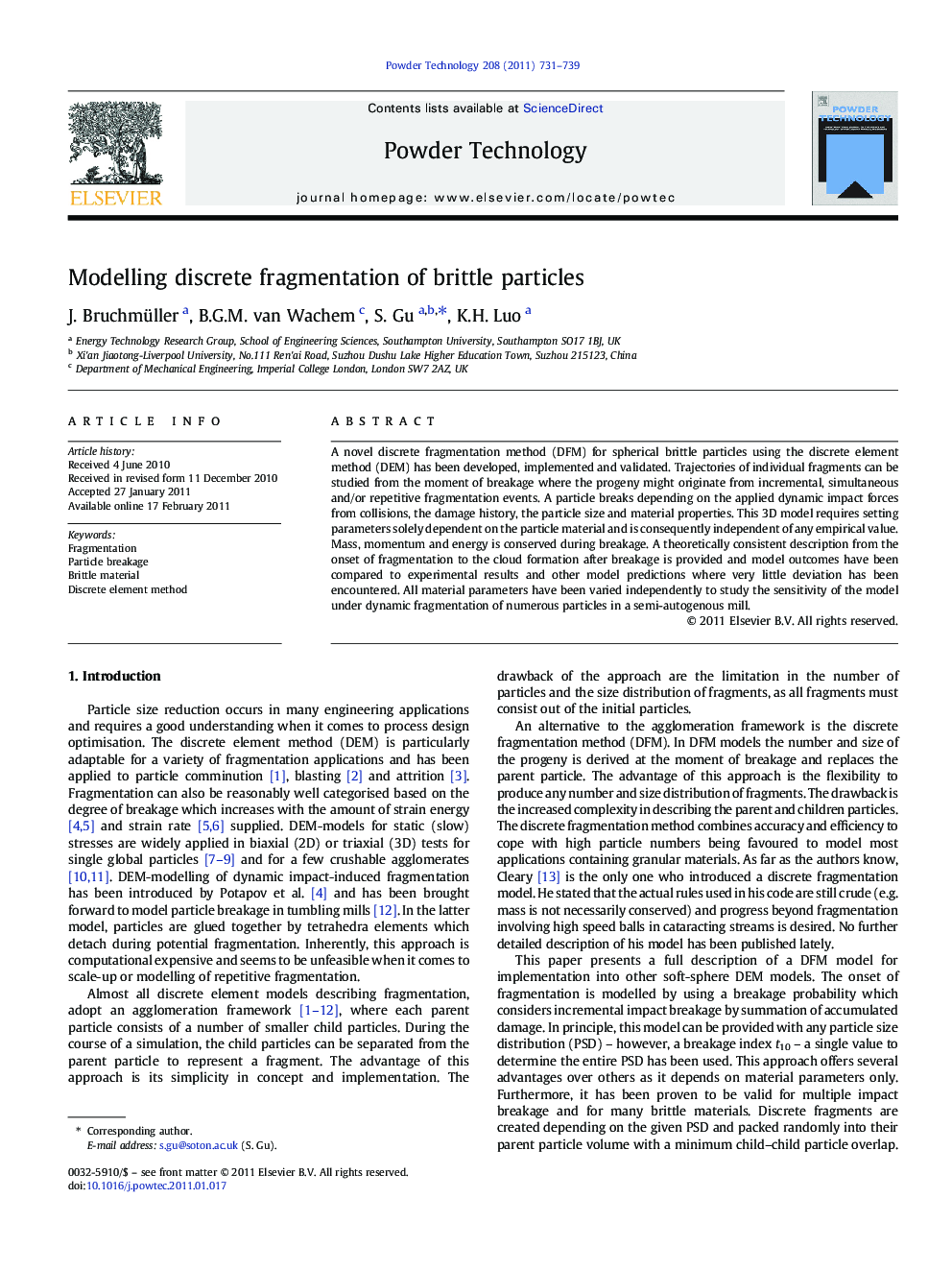| Article ID | Journal | Published Year | Pages | File Type |
|---|---|---|---|---|
| 237608 | Powder Technology | 2011 | 9 Pages |
A novel discrete fragmentation method (DFM) for spherical brittle particles using the discrete element method (DEM) has been developed, implemented and validated. Trajectories of individual fragments can be studied from the moment of breakage where the progeny might originate from incremental, simultaneous and/or repetitive fragmentation events. A particle breaks depending on the applied dynamic impact forces from collisions, the damage history, the particle size and material properties. This 3D model requires setting parameters solely dependent on the particle material and is consequently independent of any empirical value. Mass, momentum and energy is conserved during breakage. A theoretically consistent description from the onset of fragmentation to the cloud formation after breakage is provided and model outcomes have been compared to experimental results and other model predictions where very little deviation has been encountered. All material parameters have been varied independently to study the sensitivity of the model under dynamic fragmentation of numerous particles in a semi-autogenous mill.
Graphical AbstractA model for spherical brittle particles using DEM is presented. This 3D model accounts for incremental, simultaneous and repetitive fragmentation events. Mass, momentum and energy is conserved during breakage. A theoretically consistent description is provided and model outcomes have been compared to experimental results and other model predictions.Figure optionsDownload full-size imageDownload as PowerPoint slideResearch Highlights► A new model is developed for implementation into soft-sphere DEM models including discrete, incremental, repetitive and/or simultaneous fragmentation events. ► Material parameters used in that model are often derived from independent testing methods. ► Fragmentation has been modelled up to impact velocities of 6700 m/s to demonstrate the reliability of the two velocity component approach used herein. ► The model is able to fragment particles into an infinite number of progeny particles. ► The code delivers much information related to the fragmentation event for instance the fragment velocity and trajectory from the moment of breakage, the degree of particle damage accumulated in the past or the progeny PSD.
